What is Load?
Loads are the forces that can result in stresses, deformations, or accelerations. There are numerous different types of structural loads that can act on a structure. Its nature will differ depending on the design, usage, location, and materials. When a structure fails, it is almost always because its load-carrying capacity is inadequate for its actual load. Compression, Tension, and Shear are all possible types of structural loads.
In the field of structural analysis, engineers examine the effects of loads on structures and structural components. It is important to keep an eye on how much weight a structure can handle to avoid structural failure. Structural problems and even failure can result from various loads, which can cause stress, displacement, or deformation. An important and difficult task is determining the total load on a structure.
Different types of Loads in Structure:
There are two primary considerations when building a structure: safety and cost. The economy is impacted if the loads are adjudicated and taken higher. Safety is compromised if economic considerations are considered, and lighter loads are considered. It is, therefore, necessary to precisely calculate the estimated action of various loads. ASCE 7: Minimum Design Loads for Buildings and Other Structures and Indian standard code IS: 875–1987 specify various design loads for structures. A structure’s foundation is required for the following different types of loads.
1. Dead Load
2. Live Load
3. Wind Load
4. Snow Load
5. Earthquake Load
6. Accidental Load
1. Dead Load:
The weight of a building’s structural elements, such as its beams, walls, roof, and structural flooring components, are examples of dead loads, also referred to as permanent or static loads. Dead loads can also include permanent non-structural partitions, immovable fixtures, and even built-in cupboards.
Dead loads include the structure’s weight or other fixed elements before any live loads are considered. The total weight of the structure is the sum of the dead weight and the live weights applied to it. The volume of each section is multiplied by the unit material weight to determine the total dead load of each structure.
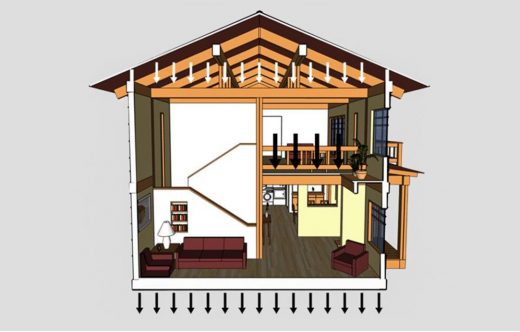
Fig 1: Dead Load
Courtesy: civilbull.com
The volume of each section is multiplied by the unit weight to calculate the dead loads for each structure. The following factors influence the calculation of the structure’s dead load:
- The member’s or structure’s weight.
- A construction’s total weight is based on the materials used.
- Permanent member or structure’s weight in pounds.
- Fixed service equipment and furniture weigh a lot of weight.
- How pre-stressing affects the overall outcome.
2. Live Load:
Imposed loads, also known as live loads, are another type of vertical load that must be considered when a structure is designed. Non-decelerating or non-impacting loads are known as live loads. For example, the weight of movable partitions or furniture is assumed to produce these loads as part of the building’s intended use or occupancy. It’s impossible to predict what the current live load will be.
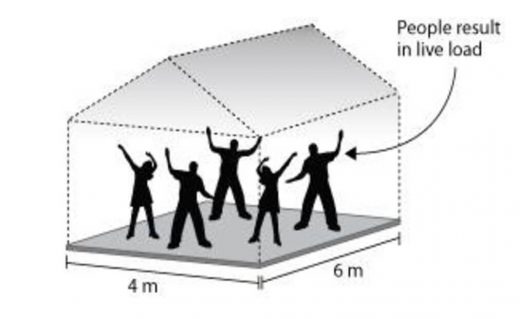
Fig 2: Live Load
Courtesy: theconstructor.org
The designer must take into account these additional stresses. It’s one of the most significant weights in the design. IS 875 (part 2)–1987 specifies the minimum live load values that must be assumed in new construction projects. On the other hand, it depends on the purpose of the building. The code provides the live load values for the following accommodation class:
- Homes, hotels, hostels, and other types of residential buildings such as boiler room, plant room, garage and storage facilities.
- Institutional structures.
- Buildings for the education of students.
- Buildings for commercial and office use.
- Assemblage facilities.
- Commercial buildings.
- Buildings of the industrial sector.
- Rooms for storing things.
Buildings and Structures- Live Loads has specified different materials for different building types. An educational building’s 3kN/m2 occupant live load is significantly higher than its 2kN/m2 occupants in a dwelling house.
3. Wind Load:
As the structure must withstand its weight, it must also withstand wind, earthquakes, and other external forces. There should be no exceptions to this rule regarding structures, components, and cladding, all of which must withstand wind loads. It is known as a wind load when the wind exerts pressure on a structure. This weight is dispersed over the entire structure’s surface area. As a building’s height increases, so do the magnitude of this load, i.e., due to the wind, taller structures have a greater impact than shorter ones.
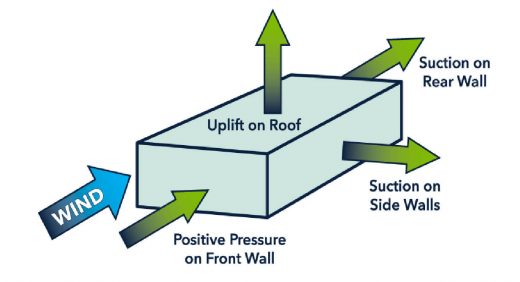
Fig 3: Wind Load
Courtesy: hassdoor.com
A structure’s angle of attack in wind load is the angle formed by the wind’s direction and the structure’s reference axis. The wind speed has a direct effect on the Wind Load (WL). Speed and wind load are directly proportional. The area’s average wind speed influences the wind load on a structure.
The Basic Wind Speed is the wind speed 10 meters above mean ground level. The mean height above ground level in open terrain is calculated using peak gust velocity averaged over three seconds. It is calculated by multiplying the actual wind speed by the following three coefficients, each of which represents a different factor:
- The significant risk level
- The roughness of the terrain, the height of the structure, and its size
- The local geography
4. Snow Load:
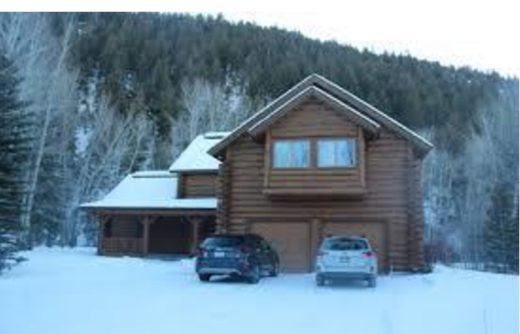
Fig 4: Snow Load
Courtesy: edtengineers.com
When snow accumulates, it creates a vertical force on the ground. Large amounts of snow can accumulate, burdening the building, especially in areas prone to heavy and frequent winter snowfalls. Code of Practice for Design Loads (Other Than Earthquake) for Buildings and Structures – Snow Loads recommends snow load on roofs of buildings in India. The shape of a building’s roof is the most important factor in determining how much snow it can bear. When calculating the mass of snow, there are numerous factors to consider:
- Moisture content
- Distribution
- Accumulation
- Temperature variation
5. Earthquake Load:
As a result of seismic excitations, the structure experiences an earthquake load. Inertia force varies in mass. Earthquake loading will be much higher because of a structure’s greater mass. The structure will fail or be damaged if the earthquake load exceeds the element’s moment of resistance.
Many factors influence earthquake loading, including the building’s weight or mass, its dynamic properties (such as how it moves), and the stiffness differences between adjacent floors. Structures placed on the ground, or adjacent structures, are subject to the effects of an earthquake’s force on their surface(s). Seismic activity in an area necessitates careful analysis and
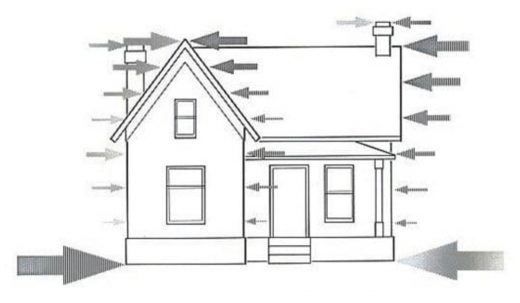
Fig 5: Earthquake Load
Courtesy: theconstructor.org
Design of structures to ensure that they will not collapse in the event of an earthquake. The following elements influence earthquake load:
- Earthquake hazard
- Structure’s defining characteristic
- The force of gravity.
6. Accidental Load:
A significant accidental load on a given structure over the period under consideration is extremely rare, and in most cases, the load is temporary. The human actions listed below generate the accidental loads.
- Impacts from collisions
- Fire
- Explosion
Additional Effects and Loads on Structures:
According to IS 456 – 2000 clause 19.6, in addition to the load previously mentioned, consideration must be given to the following forces and effects if they have the potential to affect the structure’s safety and serviceability materially: (i) The foundational motion (ii) Elastic axial shortening (iii) Pressure of the soil and fluid (iv) Impact (e) Fatigue (vi) Vibration (vii) Erection loads), and (viii) The effect of stress concentration brought on by point loads and similar things.
Conclusion:
Structures can be stressed, displaced, or deformed by various loads, leading to structural issues and even structural failure. It’s critical and time-consuming to figure out how much weight is bearing down on a structure.
Structural engineers can begin designing the structure once the loads have been established. Correct load calculations, building code dimension tables, and the appropriate sizes of structural members all play an important role in a building’s stability.
References: –
1. 1.2: Structural Loads and Loading System – Engineering LibreTexts. (2020, January 2). Engineering LibreTexts; eng.libretexts.org. https://eng.libretexts.org/Bookshelves/Civil_Engineering/Book%3A_Structural_Analysis_(Udoeyo)/01%3A_Chapters/1.02%3A_Structural_Loads_and_Loading_System
2. Types of Loads on Structures – Buildings and Other Structures – The Constructor. (2016, October 6). The Constructor; theconstructor.org. https://theconstructor.org/structural-engg/types-of-loads-on-structure/1698/
3 Primary Loads. (n.d.). web.mit.edu. Retrieved July 19, 2022, from http://web.mit.edu/4.441/1_lectures/1_lecture17/1_lecture17.html
4. Types of structural load. (n.d.). Types of Structural Load – Designing Buildings; www.designingbuildings.co.uk. Retrieved July 19, 2022, from https://www.designingbuildings.co.uk/wiki/Types_of_structural_load
5. Types of Loads: Fundamentals: Knowledgebase::SAFAS. (n.d.). Types of Loads: Fundamentals: Knowledgebase::SAFAS; www.setareh.arch.vt.edu. Retrieved July 19, 2022, from https://www.setareh.arch.vt.edu/safas/007_fdmtl_05_types_of_loads_4.html
If you have a query, you can ask a question here.


